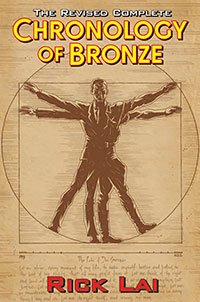 Recently I looked at the “biographies” of pulp characters Tarzan and Doc Savage by Philip José Farmer. As part of doing a biography, Farmer also worked out a chronology of these characters to fit these works in. However, he is not the only pulp researcher to do this. So with this posting, I look at some of the other pulp chronologies I am aware of.
Recently I looked at the “biographies” of pulp characters Tarzan and Doc Savage by Philip José Farmer. As part of doing a biography, Farmer also worked out a chronology of these characters to fit these works in. However, he is not the only pulp researcher to do this. So with this posting, I look at some of the other pulp chronologies I am aware of.
I will be looking at the following:
- “Revised Complete Chronology of Bronze” by Rick Lai
- “The Adventures of Doc Savage: A Definitive Chronology” by Jeff Deischer
- “The Way They Were” also by Deischer
- “Chronology of Shadows: A Timeline of The Shadow’s Exploits” also by Lai
- “A Tarzan Chrono-Log” by Alan Hanson
Rick Lai’s “Chronology of Bronze” was the first Doc chronology I had seen after reading Farmer’s work. It’s gone through three editions. The first came out as “Bronze Age” from Tom Johnson‘s Fading Shadows concern in 1992. A revised edition later came out on CD from Paul McCall’s Aces concern. This edition is the third, now from Altus Press in 2010.
It should be noted that Rick’s work builds off of Farmer’s work, but takes it further. Rick is active in the Wold Newton Universe field.
This chronology is limited to the “canon” of Doc Savage: the 182 pulp stories by Lester Dent and others, the Dent-scripted radio show, the later Doc novels by Will Murray (based on Dent’s notes) and the solo Farmer Doc novel. Left out are the Doc comics (thankfully) and various Doc pastiches (to a degree).
The bulk of the volume (250 pages out of 325) is taken up by the chronology. This is not just a dry listing of the works in order, but most have info on how each work fits in, and much of this info runs for several pages.
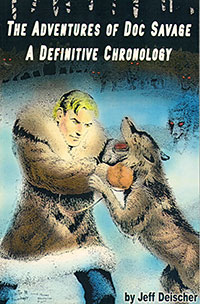 The rest of the volume is filled with several other interesting chapters. There is one on the apocryphal adventures, which include some of the Doc pastiches, such as Doc Ardan (which I’ve posted on), the recent “Evil in Pemberley House” (which I’ll get to soon), Doc vs. Fu Manchu, Doc & the Rocketeer and more. Another chapter deals with possible connections/crossovers with The Shadow.
The rest of the volume is filled with several other interesting chapters. There is one on the apocryphal adventures, which include some of the Doc pastiches, such as Doc Ardan (which I’ve posted on), the recent “Evil in Pemberley House” (which I’ll get to soon), Doc vs. Fu Manchu, Doc & the Rocketeer and more. Another chapter deals with possible connections/crossovers with The Shadow.
We then have some short chapters on Doc’s literary output, and a chronological checklist and an alphabetic listing of the works.
Jeff Deischer’s “The Adventures of Doc Savage: A Definitive Chronology” is another work that takes a new and different look at the chronology of Doc Savage. It’s gone through three editions (2000, 2008, and 2012).
He doesn’t ignore the work of Farmer and other Wold Newton researchers. Rather, he felt that Farmer’s chronology was incorrect, and thus did his own. He comes up with a different birth date for Doc Savage and goes from there.
While the bulk of this work is taken up by the chronology, it does have some additional articles as well, especially in the current third edition. This includes ones on Doc’s headquarters, Doc’s parentage, the Mayfair family, and John Sunlight.
Deischer’s “The Way They Were” takes that idea further with chronologies of other fiction characters. He starts off with further items on Doc’s chronology not included in his Doc book, then has sections on The Avenger, and then Jules Verne‘s works, looking at Captain Nemo, Robur, and the Gun Club. We also get chapters on Dracula, Frankenstein, Gullivar Jones, James Bond, and others.
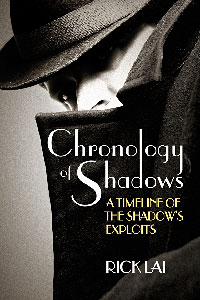 Rick Lai’s “The Chronology of Shadows” is, as far as I know, the only attempt at creating a chronology for The Shadow novels. It first appeared in 1995 from Tom Johnson’s Fading Shadows, and this edition from Altus Press done in 2007 is a revised version of it.
Rick Lai’s “The Chronology of Shadows” is, as far as I know, the only attempt at creating a chronology for The Shadow novels. It first appeared in 1995 from Tom Johnson’s Fading Shadows, and this edition from Altus Press done in 2007 is a revised version of it.
Alan Hanson’s “A Tarzan Chrono-log” (1990, 2003) is an alternate chronology for Tarzan. The author is not involved with the Wold Newton idea, and while aware of Farmer’s work, goes his own way.
This chronology is also laid out as a large table, rather than being done in prose. However, there are two long essays as well. One looks as what Tarzan did during the two-thirds of his life not covered by the novels, and the other looks at the “Great Korak Time Discrepancy,” which tries to figure out how Korak (Tarzan’s son) seems to have aged 16 years in only a few. For those who are fans of Tarzan, this is a work that should be looked at.
So there you have it. Five additional chronologies to check out for the pulp fan. These are not the only ones out there, but the main ones I know of in stand-alone works.

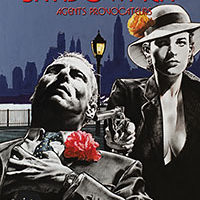
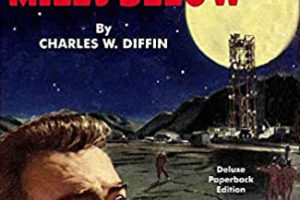
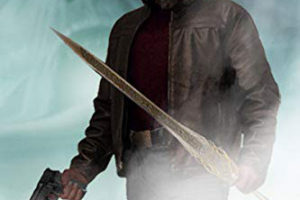
Your comments